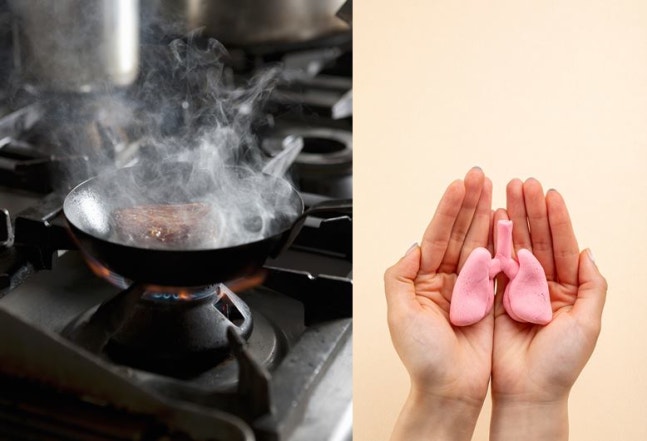
Mom who doesn't smoke has lung cancer?... Unexpectedly, is it because of this in the kitchen?
2024.08.01 13:37
照会 おすすめ スクラップ
So.. after both my husband and I suffered from serious illnesses three years ago
They changed the gas stove at home to an induction cooktop.
And when cooking, you should avoid sticking your nose in as much as possible...
Since I am short, I keep poking my nose to look and end up getting scolded by my husband, haha...
Even if grandpa is a heavy smoker, it's actually the grandmothers who have lung cancer...
In the old fireplace, you would stick your nose in to cook rice and food, and you would smoke cigarettes indirectly exposing your grandfather to secondhand smoke.
So, the story that says "because" is not wrong... Sigh.....
---------------------------------------

Today’s Health = August 1st every year is 'World Lung Cancer Day.' To raise awareness of the global impact of lung cancer, the International Association for the Study of Lung Cancer (IASLC) and the International Respiratory Society (FIRS) designated this day in 2012.
Eighty percent of lung cancers are caused by smoking, but non-smokers are not necessarily safe from lung cancer. In particular, over 80% of female lung cancer patients have never smoked, and the cause of lung cancer in non-smokers may be related to the kitchen.
When frying or stir-frying, high concentrations of fine dust called 'cooking fumes' are generated. Cooking facilities with poor ventilation or those that use a lot of hot oil pose a very high risk of developing lung cancer, so extra caution is especially necessary.
The typical symptoms of lung cancer include dry cough, sputum and hemoptysis, chest pain, hoarseness, and shortness of breath. Rapid weight loss and chronic fatigue can also occur. However, since the lungs lack nerves, symptoms are rarely present even as the cancer progresses, and by the time patients notice abnormalities and seek medical attention, it is often already at stage 3 or higher.
To enable early detection, adults aged 54 to 74 who have a history of lung disease, a family history of lung cancer, or a history of smoking should regularly undergo low-dose chest CT scans. Low-dose CT is a screening method that minimizes radiation exposure to one-sixth, reducing side effects caused by radiation imaging.
Recent immuno-oncological agents are becoming the standard treatment for lung cancer. Additionally, new treatment methods aimed at reducing postoperative recurrence rates are being actively researched, such as pre- and post-operative chemotherapy for stage 2 and 3 patients with high recurrence risk after surgery. Therefore, there is no need to be discouraged or disappointed upon receiving a lung cancer diagnosis.
The best way to prevent lung cancer is to avoid smoking. If quitting smoking on your own is difficult, seek help from a hospital. Additionally, to prevent lung cancer caused by cooking fumes, it is important to ventilate frequently during cooking and to wear a mask.
0
0
コメント 3